0 Comments
First published by Hpathy July 18 2022 Keywords Canine astraphobia, noise sensitivity, homeopathic therapy, case report. Introduction Anxieties and behavioural problems in dogs can decrease their quality of life (Salonen et al., 2020), rendering them more vulnerable to disease and shortening their lifespan (Dreschel, 2010). Behaviour has a major genetic component (Ilska et al., 2017). Behavioural traits are complex and affected by intricate interactions between genes and environmental factors (Overall et al., 2014), with some genomic areas and loci associated with fear and noise sensitivity (Sarviaho et a., 2019). Noise sensitivity is the most common anxiety-related trait in dogs (Salonen et al., 2020), with an estimated prevalence of between 20% and 50% (Tiira et al., 2016). Typically noise sensitivity is generalised and displayed toward several different noises (Blackwell et al., 2013). Fear of fireworks is the most common sub trait with a prevalence of 26%, followed by fear of thunder at 16% (Salonen et al., 2020). Case report Matilda, an 11-year- old border collie. Initial consultation 01 December 2021. Main complaint Canine astraphobia. Background Matilda has had three litters, and lives happily with her owner and two other border collies, one of which is her five-year-old daughter who she continues to mother. From eight weeks of age Matilda becomes frenzied from loud noises including fireworks, hard rain on the roof, and vehicle backfire, but particularly during thunderstorms when she attempts to break out of the house any way possible, scratching at doors, destroying window coverings, damaging the house and herself in the process. At age eight Matilda escaped from an impossibly closed metal dog crate where she was placed in anticipation of an oncoming thunderstorm when her owner had to leave for work, destroying three-day old cruciate ligament surgical repair, ruining her mouth, leaving so much blood the house resembled a murder scene, and digging out under the fence only to become trapped in the neighbour’s swimming pool gate, and subsequently rescued. Matilda’s owner has ‘tried everything’ to help her including a thunder jacket, playing thunder audio to desensitize her ‘but she’d freak out’, Valium – which her vet guaranteed to work – ‘turned her crazy’ making her owner want to take it herself! A proprietary zeolite liquid helped to calm her down, but this is expensive and has run out, and not been administered for a few months. Salonen et al., (2020) found one quarter of the border collies in their study showed fear of thunder, which they also suggest becomes prevalent, at 35%, in females of all breeds aged over ten years. Presently Matilda knows a thunderstorm is coming well before the clouds gather, becoming increasingly terrified, panting, shaking, and ultimately trying to dig her way through the carpet, the bed, the floor, the couch, attempting to escape through anything including windows, and to smash her way out of the doors. It is impossible to calm her down, talking to her, holding and loving her, and lying with her has no effect at all as Matilda tries to dig through her owner, and will run right past her to get out the door. This is ‘horrendously sad’ for the whole family, but particularly Matilda who historically if she succeeded in escaping would always run to the same friend’s house, even though she has love and safety and company in her own home. When they moved, her owner was constantly terrified she’d escape and run and run, and never be found – sadly a common occurrence in the outback. Prescription Stramonium 10M – one dose to begin. Stramonium has tremendously intense and energetic pathology, with states of mania and violence presenting as extreme fear, where the individual is uncontrolled, impulsive, and possessing super human strength, but often without aggression (Morrison, 1993). Outcome Shortly after administration of the first dose, in the face of a thunderstorm Matilda knew was coming well before it arrived - even before any clouds had formed, she displayed her usual terror but was panting and shaking in a way her owner hadn’t seen before ‘like she’d run 10kms.’ After a while, even as the storm intensified, her terror, panting, and shaking subsided drastically, and although still present Matilda stayed right by her owner’s side for the first time in her life without a frenzied desire to escape. Intensification of symptoms for a few hours followed by rapid amelioration is an excellent reaction, indicating a good state of overall health, and proving the remedy is correct through its ability to elicit that strong initial response (Vithoulkas, 2017). Discussion According to allopathic veterinary practice, canine astraphobia can only be mitigated. Behaviour modification, desensitization, medications, or a combination of these treatments, coupled with preparation, perseverance, and patience are encouraged to ‘help dogs to feel safe instead of scared’ (Strommen, 2022). The use of and interest in veterinary complementary medicine is increasing internationally, with a 2022 survey finding 85.4% of German veterinarian respondents implement complementary medicine in their practice, homeopathy being the most utilized, with 44.3% practicing classical homeopathy (Stanossek & Wehrend, 2022). Homeopathy, a hotly debated but often used personalized therapeutic medical intervention, has been shown to alleviate stress responses in pigs (Dang & Kim, 2021). Frequently used by human anxiety sufferers (Pilkington et al., 2006) homeopathy shows possible benefit in psychiatric complaints (Davidson et al., 2011) such as anxiety disorders (Hock & Juckel, 2018; Parewa et al., 2021), and as a side note, meta-analysis identified greater efficacy for homeopathy over fluoxetine in major depressive disorder (Rotella et al., 2020). Conclusion Thunderstorms were a lifelong trauma for Matilda and her owner who ‘got no sleep on stormy nights with a freaking out dog digging through anything,’ and who sometimes slept in the car, the only place of calm, after driving Matilda around and around. Homeopathy can improve quality of life (Frass et al., 2020, Witt et al., 2008, Bell et al., 2004) which in Matilda’s case has had significant flow on effects to her owner. Small animal veterinary studies are required to assess the efficacy of homeopathy in canine astraphobia. References
Bell IR, Lewis DA 2nd, Brooks AJ, Schwartz GE, Lewis SE, Walsh BT, Baldwin CM. 2004. Improved clinical status in fibromyalgia patients treated with individualized homeopathic remedies versus placebo. Rheumatology (Oxford) [online]. May;43(5):577-82. Available from https://pubmed.ncbi.nlm.nih.gov/14734789/ Blackwell, E. J., Bradshaw, J. W. S. & Casey, R. A. 2013. Fear responses to noises in domestic dogs: Prevalence, risk factors and co-occurrence with other fear related behaviour. Applied Animal Behaviour Science [online]. 145, 15–25. Available from: https://www.sciencedirect.com/science/article/abs/pii/S016815911200367X Dang X, Kim IH. 2021. The effects of road transportation with or without homeopathic remedy supplementation on growth performance, apparent nutrient digestibility, fecal microbiota, and serum cortisol and superoxide dismutase levels in growing pigs. Journal of Animal Science [online]. Apr 1;99(4):skab077. Available from https://academic.oup.com/jas/article-abstract/99/4/skab077/6162474?redirectedFrom=fulltext Davidson JR, Crawford C, Ives JA, Jonas WB. 2011. Homeopathic treatments in psychiatry: a systematic review of randomized placebo-controlled studies. Journal of Clinical Psychiatry [online]. Jun;72(6):795-805. Available from https://pubmed.ncbi.nlm.nih.gov/21733480/ Dreschel, N. A. 2010. The effects of fear and anxiety on health and lifespan in pet dogs. Applied Animal Behaviour Science [online]. 125, 157–162 (2010). Available from: https://www.sciencedirect.com/science/article/abs/pii/S0168159110001243 Frass M, Lechleitner P, Gründling C, et al. 2020. Homeopathic Treatment as an Add-On Therapy May Improve QOL and Prolong Survival in Patients with Non-Small Cell Lung Cancer: A Prospective, Randomized, Placebo-Controlled, Double-Blind, Three-Arm, Multicenter Study. Oncologist [online]. Dec;25(12):e1930-e1955. Available from: https://pubmed.ncbi.nlm.nih.gov/33010094/ Hock N, Juckel G. Homöopathie bei psychiatrischen Patienten – Für und Wider [Homeopathy for psychiatric patients-for and against]. Der Nervenarzt [online]. Sep;89(9):1014-1019. Available from: https://pubmed.ncbi.nlm.nih.gov/29858643/ Ilska, J. et al. 2017. Genetic Characterization of Dog Personality Traits. Genetics [online]. 206, 1101–1111. Available from: https://pubmed.ncbi.nlm.nih.gov/28396505/ Morrison, R. 1993. Desktop Guide to Keynotes and Confirmatory Symptoms. Grass Valley. Hahnemann Clinic Publishing. Overall, K. L., Tiira, K., Broach, D. & Bryant, D. 2014. Genetics and behaviour: A guide for practitioners. The Veterinary Clinics of North America – Small Animal Practice [online]. 44, 483–505. Available from: https://pubmed.ncbi.nlm.nih.gov/24766696/ Parewa M, Burman AS, Brahma A, Rutten L, Sadhukhan S, Misra P, Gupta B, Saklani N, Michael J, Basu A, Ali SS, Koley M, Saha S. 2021. Individualized Homeopathic Medicines in the Treatment of Generalized Anxiety Disorder: A Double-Blind, Randomized, Placebo-Controlled, Pilot Trial. Complementary Medicine Research [online]. Mar 4:1-11. Available from https://pubmed.ncbi.nlm.nih.gov/33662951/ Pilkington K, Kirkwood G, Rampes H, Fisher P, Richardson J. 2006. Homeopathy for anxiety and anxiety disorders: a systematic review of the research. Homeopathy [online]. Jul;95(3):151-62. Available from https://pubmed.ncbi.nlm.nih.gov/27397586/ Rotella F, Cassioli E, Falone A, Ricca V, Mannucci E. 2020. Homeopathic Remedies in Psychiatric Disorders: A Meta-analysis of Randomized Controlled Trials. Journal of Clinical Psychopharmacology [online]. May/Jun;40(3):269-275. Available from: https://pubmed.ncbi.nlm.nih.gov/32332462/ Salonen, M., Sulkama, S., Mikkola, S. et al. 2020. Prevalence, comorbidity, and breed differences in canine anxiety in 13,700 Finnish pet dogs. Scientific Reports [online]. 10, 2962. Available from: https://pubmed.ncbi.nlm.nih.gov/32139728/ Sarviaho, R. et al. 2019. Two novel genomic regions associated with fearfulness in dogs overlap human neuropsychiatric loci. Translational Psychiatry [online]. 9, 18. Available from: https://pubmed.ncbi.nlm.nih.gov/30655508/ Stanossek I, Wehrend A. 2022. Application of veterinary naturopathy and complementary medicine in small animal medicine-A survey among German veterinary practitioners. PLoS One [online]. Feb 28;17(2):e0264022. Available from: https://www.ncbi.nlm.nih.gov/pmc/articles/PMC8884514/ Strommen L. 2022. Canine Storm Anxiety. Scottsdale, Arizona [online]. Available from: https://www.pethealthrx.net/canine-storm-anxiety/ Tiira, K., Sulkama, S. & Lohi, H. 2016. Prevalence, comorbidity, and behavioural variation in canine anxiety. Journal of Veterinary Behaviour. Clinical Applied Research [online]. 16, 36–44. Available from: https://www.sciencedirect.com/science/article/pii/S1558787816300569 Vithoulkas Compass, 2022. Vithoulkas Compass Homeopathy Software [computer program]. Greece. Vithoulkas, G. 2017. Levels of Health, The second volume of the Science of Homeopathy, revised edition. Alonissos: International Academy of Classical Homeopathy. Witt CM, Lüdtke R, Mengler N, Willich SN. 2008. How healthy are chronically ill patients after eight years of homeopathic treatment?–Results from a long-term observational study. BMC Public Health [online]. Dec 17;8:413. Available from: https://www.ncbi.nlm.nih.gov/pmc/articles/PMC2630323/ First published by Aurum Project Blog 20 Nov 2022 https://aurumproject.org.au/antibiotic-resistance-otitis-media-homeopathy/Complementary medicine can be used in the treatment of otitis media (aka ear infection). The use of properly prescribed homeopathic medicine (by a registered homeopath) can lead to:
Advantages for homeopathy in otitis media are:
Systematic reviews have found:
Two well regarded randomized controlled trials (RCT) showed promising results for homeopathic medicine in the treatment of otitis media with:
An observational study found pain control in 40% of children after 6hours, with resolution of all otitis media symptoms being twice as fast with homeopathic medicine (9) An Aurum Project retrospective case series analysis (10) found significant potential for homeopathic treatment of otitis media and otitis media with effusion (aka glue ear). A guide to common homeopathic medicines for otitis media can be found as part of Marom et al., 2016 (3) systematic review (copyright prohibits sharing here). Avoiding cow’s milk? Systematic review (11) found a cow's milk protein allergy in 11% of children who underwent ENT procedures, in 40% of children with otitis media with effusion, and a higher overall tendency to otitis media. Since the 1990’s expert opinion has swung against doctors giving antibiotics for otitis media (12) however, in Australia, the highest rate of dispensing antibiotics in under 65’s is for children aged between two and four most commonly for – you guessed it… otitis media (13). The Royal Australian College of General Practitioners recommend that otitis media in non-indigenous children between the ages of two to twelve years should not be treated with antibiotics unless there are signs of widespread infection. (14) Four years’ ago antibiotic resistance began to apply to our ‘reserve’ antibiotics (15) but scarily antibiotics are still being overprescribed (in direct contravention of national evidence-based prescribing guidelines) with ever increasing rates of resistant bacteria in our communities. (16) A 2018 study showed British GP’s using complementary medicine - including homeopathy - prescribed 22% fewer antibiotics. (17) References
Master J* began coughing in April 2019 when he first started school, which he loved. It was a dry night time cough which got really bad at bedtime, continued throughout the night while he slept, and woke him up at 5am. Master J often coughed until he vomited. I met with Master J, who had a history of croup, an ear infection and molluscum contagiosum, in December 2019. Mum noticed his cough was worse during the full moon time when Master J was also extra sweaty during sleep – often wetting his pillow. He loved eggs and meat, ate a lot, and often had runny stools. Master J also had a strong fear of ghosts and monsters and always wanted a light on. Homeopathic medicine recognizes an individual's emotional and physical symptoms and is prescribed in accordance with these – not on the indication that X medicine is known to assist with X condition so therefore might help Mr Y’s problem – which is standard practice in other systems of medicine. The system of homeopathy translates symptoms into meaningful data enabling an 'wholistic' prescription. CALCAREA CARBONICA (calcium carbonate) is a homeopathic medicine prepared from the middle layer of oyster shells. Commonly referred to as Calc carb, this medicine might possibly be helpful for kids who have lots of coughs and respiratory issues, who tend to sweat a lot especially on their head during sleep and are affected by or can get worse during a full moon. These kids love to eat eggs, have great appetites and many fears particularly of ghosts and monsters. Most Calc carb kids have had ear infections and you can usually see a few warts. Master J was given Calc carb in December 2019 - within seven days his cough had reduced to an occasional daytime cough without vomiting. In March 2020 his parents became convinced Master J had a ‘behavioural cough’ as he only coughed during the day, there had been no vomiting with the cough since December but he had coughed for almost one year. Master J was prescribed a different homeopathic medicine often given to kids who have a family history of respiratory issues in the parents and grandparents, symptoms which change, a history of dry (or wet) coughs from 5am onwards, runny stools, night sweats and night coughs which don’t wake them from sleep. By April 2019 Master J's cough had reduced, no longer driving his mother crazy. May, no cough. June, no cough despite travelling South to the cold which greatly aggravated the cough this same time last year. ______________________________________________ Homeopaths acknowledge that the body of evidence for homeopathic medicine is small but growing and much more research needs to happen but is there evidence for homeopathic medicine in the treatment of coughs? Homeopathy in the Age of Antimicrobial Resistance: Is It a Viable Treatment for Upper Respiratory Tract Infections? (Fixsen, 2018. PMID: 29767829) 'Multiple peer-reviewed studies were found in which homeopathy had been used to treat URTIs and associated symptoms (cough, pharyngitis, tonsillitis, otitis media, acute sinusitis, etc.) Results for homeopathy treatment were positive overall, with faster resolution, reduced use of antibiotics and possible prophylactic and longer-term benefits. In the light of antimicrobial resistance, homeopathy offers alternative strategies for minor infections and possible prevention of recurring URTIs.' A Randomized Controlled Trial of a Homeopathic Syrup in the Treatment of Cold Symptoms in Young Children (Jacobs and Taylor, 2016. PMID: 27912951) 'The severity of cold symptoms compared to baseline values found that improvements in sneezing, cough and the composite cold score were significantly greater at both the first and second assessments among those receiving the cold syrup compared to placebo recipients. The homeopathic syrup appeared to be effective in reducing the severity of cold symptoms in the first day after beginning treatment.' Homeopathic Medicine for Acute Cough in Upper Respiratory Tract Infections and Acute Bronchitis: A Randomized, Double-Blind, Placebo-Controlled Trial (Zanasi et al., 2014. PMID: 23714686) 'At day four and seven days of treatment cough severity was significantly lower in the homeopathic group than in the placebo group. Sputum viscosity was significantly lower in the homeopathic group. We concluded that the homeopathic syrup employed in the study was able to effectively reduce cough severity and sputum viscosity, thereby representing a valid remedy for the management of acute cough induced by URTIs.' *Master J’s parents have checked and confirmed this content, and consented to publishing. 2022 UPDATE - Master J's cough has not returned. In Australia, antibiotic use is high compared with other developed countries. Did you know that in 2015 in Australia 30,000,000 (yes, 30 million!) antibiotic prescriptions were made - that’s more than 1 prescription for every Australian! A five year Australian study, released in 2017, found that antibiotics were prescribed for upper respiratory tract infection (URTI) at rates four to nine times higher than those recommended by national clinical guidelines. Prescribing within the guidelines would reduce the number of antibiotics dispensed by nearly 90% for some conditions. Antibiotics are being overprescribed and dispensed in Australia for conditions for which there is no evidence of benefit, including influenza (52.2% of patients) and acute bronchitis (92.4% of patients). Why do we need to reduce our use of antibiotics? The World Health Organization has stated that antimicrobial resistance is one of the greatest threats to human health. There has been a distinct increase in resistant infections such as methicillin-resistance in Staphylococcus aureus (MRSA) in Australia since 2006. Resistance to antimicrobials occurs when bacteria change to protect themselves from these drugs. When this happens, infections that could once be treated or prevented with antimicrobials can become life-threatening. Antibiotics are the most commonly prescribed type of antimicrobial – so improving the way we use antibiotics helps fight antimicrobial resistance. Over 40% of Australians had at least one antibiotic dispensed to them in 2017. Antimicrobial Use and Resistance in Australia (AURA) Antimicrobial Use and Resistance in Australia (AURA) is our national surveillance system. Data collected by AURA is being used to help doctors, health professionals, and governments take the right action to reduce antimicrobial resistance in Australia. ‘In patients aged under 65 years, the highest rate of dispensing (of antibiotics) was for children aged between two and four years’. A key finding from 2019 AURA report. The most common reason antibiotics are prescribed for Australian children? Acute otitis media - middle ear infection. However, over the past 30 years, expert opinion has swung against doctors giving antibiotics for this problem. The Royal Australian College of General Practitioners recommend that middle ear infection (otitis media) in non-indigenous children between the ages of two to twelve years should not be treated with antibiotics unless there are signs of widespread infection. The good news? There was a decline in antibiotic dispensing in 2016 and a further decline in 2017, the first downward trend since the late 1990s. But… • More than 50% of people with colds and upper respiratory tract infections were prescribed antimicrobials when they are not recommended by current prescribing guidelines. • Antibiotics are being prescribed for acute bronchitis and flu, for which antibiotics are never recommended. • Around 50% of all antibiotic prescriptions were ordered with repeats when they may not be needed. Antibiotics treat some bacterial infections, but for many common conditions, such as colds and flu, they are not effective at all. For your own personal health, you should only take antibiotics for infections caused by bacteria. Antibiotics will not help if you have a viral infection, and you run the risk of experiencing side effects and contributing to antimicrobial resistance. There are three things you can pledge to do to reduce antibiotic resistance:
You can make an official NPS Medicinewise Antibiotic resistance pledge Also, please consider the food you buy remembering that certified organic foods in Australia prohibit the use of any antibiotics (and growth hormones). The Australian Government and industry collect data to monitor antimicrobial resistance in pigs, chicken meat, chicken eggs and salmon, having the fifth lowest level of antibiotic use in food producing animals of countries examined in a 2016 review. Can complimentary medicine can play a role in reducing antibiotic resistance? The results of a 2016 study published in 2016 in the British Journal of Medicine (BMJ) showed that practices which employed GPs with additional training in complementary medicine, such as homeopathy, prescribed 22% fewer antibiotics. Homeopathic medicine and upper respiratory tract infection (URTI) in children. Homeopathy merits consideration as an early treatment option in uncomplicated URTI of children and is increased by the problem of the overuse of antibiotics, particularly in pre-schoolers. The Effectiveness and Safety of a Homeopathic Medicinal Product in Paediatric Upper Respiratory Tract Infections With Fever The results of this Randomized Controlled Trial point to potential benefits to decrease the public health risk of antibiotic resistance due to an antibiotic sparing effect, and that homeopathy may also be able to contribute and contain at a public health level the rising problem of antibiotic resistance. Homeopathy is increasingly popular. In Germany, 60% of the people have used homeopathic medicine, with the great majority (87%) of users reporting positive experiences, most frequently for colds and flu. Homeopathy is the most commonly used complementary medicinal treatment for German children, It is estimated that 28% of infants are treated with homeopathy during their second year of life and, 16% of all homeopathic medicines used in children are for flu or rhino pharyngeal complaints. A study from France showed that patients managed with homeopathic medicine for URTI had significantly lower consumption of antibiotics compared to conventionally managed patients, while achieving comparable clinical outcomes. Among adult homeopathy users in the United States, respiratory and ear, nose, and throat complaints are the most commonly treated conditions. The First Survey of Australian Homeopathy indicate that ten percent of visits to a homeopath were for general lung, ear, nose and throat complaints. Homeopathic medicine, Acute otitis media - middle ear infection and Upper Respiratory Tract Infection (URTI) in children. The public health and individual risks of inappropriate antibiotic prescribing and conventional over-the-counter (OTC) drugs in the treatment of children with acute otitis media (AOM) and upper respiratory infections (URTIs) are significant. Homeopathic medications as clinical alternatives for Symptomatic Care of Acute Otitis Media and Upper Respiratory Infections in children. This paper shows that at a practical level, homeopathy offers several advantages over conventional OTC drugs for children: 1. Fewer and less serious side effects. 2. Earlier onset symptom improvements. 3. Lower costs, with reduced use of conventional drugs. The theme of significantly faster onset of improvement seen in children and adults with homeopathy than with conventional treatment has been shown across studies in multiple countries, in, for example, a 2007 study of 1577 children with acute respiratory and ear complaints. Most real-world outcome studies in adults and children (but not all) show that homeopathy substantially lowers costs and reduces use of conventional medications in primary care populations. Based on the evidence, homeopathic medicines offer one viable strategy for treating Acute Otitis Media and Upper Respiratory Tract Infections in children to reduce inappropriate use of antibiotics and the associated worldwide problem of drug resistant organisms – antimicrobial resistance. Homeopaths acknowledge that the body of evidence for homeopathic medicine is small but growing and much more research needs to happen. Over 200,000,000 people use homeopathic medicine on a regular basis, worldwide. Homeopathic medicine is not a one size fits all over the counter prescription. It needs to be skillfully prescribed for the symptoms the person is suffering not for the name of the disease or condition. Homeopathic medicine recognises mental, emotional and physical symptoms, and has a systematic way of utilizing a symptom via a rubric. A rubric is a clinically verified symptom found in the repertory -an index of homeopathic medicines by symptom. Repertorization, the process of translating symptoms into clinically usable data, is a scientific, systematized standard unique to homeopathic medicine. For example, a dry cough at night which improves after drinking, with a hoarse, cracked voice might look like this: Homeopathic medicines are prescribed in accordance with clinically verified symptoms. Always seek medical advice first and in emergencies. Working with a registered homeopath is recommended – Australia’s best homeopaths here Washing your hands is the most effective way to stop the spread of gastro, colds and flu! We all need to wash our hands more often and thoroughly, especially:
How to wash hands correctly: Use a bar of soap – it doesn’t need to be antibacterial.
Where I come from in New Zealand, local Maori always wash their hands after leaving a sacred site, significant place or cemetery, and at school all kids learn ‘horoi o ringa ringa’ wash your hands clean. Children need to wash their hands as often as adults and singing a song can make it fun! To the tune of ‘happy birthday’ sing: ‘Wash my hands so good and clean Wash my fingers and in between Watch the germs all go away Now they’re clean, I’ll go and play’ (singing twice gives a 20 second hand wash.) Babies should have their hands washed too using a wet, soapy flannel and always making sure the soap is rinsed off and their hands dried thoroughly. Dr Monica Plane the very talented Chiropractor also makes soap! Monica’s soaps are hand made using only the purest natural ingredients and can be purchased from the clinic. Monica’s personal favourite? Spearmint and lemongrass. My favourite Soap by Monica is Almond Milk Confetti – uplifting and soothing. Beautiful! Effective hand washing is essential to the prevention of health care associated (nosocomial) infections and the transmission of antimicrobial resistance aka superbugs. Research shows that improved hand washing among healthcare workers:
2019 Australian hand washing data from over 1000 public and private healthcare organisations including 971 hospitals shows an average handwashing rate of 86%. Nurse compliance is 88.6% followed by doctors at 74.4%. By profession, Dental Therapists are the best hand washers at over 90% across the board. Western Australian hospitals have improved access to hand hygiene products. Your healthcare worker should always perform hand hygiene in front of you. If you don’t see them do it, remind them! This recent article on the topic is well worth reading Horoi o ringa ringa! References: https://healthywa.wa.gov.au/Articles/F_I/Facts-about-hand-hygiene https://www.healthdirect.gov.au/hand-washing https://www.hha.org.au/ Article first published at 'The Aurum Project - Children's Health Research with Natural Medicine & Homeopathy' under reference: Epstein-Barr virus, Headaches and homeopathic medicine 16/04/2019. Accessible at https://aurumproject.org.au/glandular-fever-homeopathy/ Eighteen year old Mandy* presented to the Pilbara Natural Medicine Clinic in June 2017 with extreme fatigue and headaches. Suffering for a full two and a half years after developing glandular fever caused by the Epstein Barr virus, Mandy finally found relief with homeopathic medicine. A very high achiever, Mandy had been so debilitated she was unable to complete her final term of year twelve and was currently studying for her science degree online. Just after her sixteenth birthday, Mandy developed a cold. She also had headaches and fatigue. Her condition deteriorated and seven days later she could not eat or drink, was photophobic, sleeping the whole day and, had painful cervical (neck) glands. For a few months Mandy consulted various GP’s who tried to help by suggesting electrolytes and probiotics. Then crisis point was reached with Mandy being raced to the emergency department. “I felt I was going to die.” She was admitted, given IV fluids for dehydration and a blood test which revealed infectious mononucleosis (commonly referred to as glandular fever) (Rubric 1) caused by the Epstein-Barr virus and, low iron. Two years later, June 2017, Mandy ‘couldn’t get out of bed’. She was sleeping for twenty hours due to headaches which ‘feel like there is no fluid in my brain, and my brain is knocking the walls’ (Rubric 2) ‘I want to sleep through the pain, lay down to sleep so I don’t feel it.’ Mandy was waking with very puffy eyes and face (Rubric 3) and the only time she had energy was when drinking alcoholic cider ‘it gives me energy, I can dance all night’ (Rubric 4). Mandy constantly worried that her whole life would be like this. (Rubric 5). Mandy was always catching colds, had had to give up gymnastics coaching at the same time as being unable to finish year twelve because she was ‘catching everything going around’ and, had recently developed a bad case of ringworm (Rubric 6). Thirsty all the time, drinking around four litres of water per day, Mandy could not quench her thirst (Rubric 7) ‘feeling dry and dehydrated’ and only eating sugar ‘chocolate’ and ‘anything salty.’ Mandy consulted a naturopath who gave her a lot of supplements which she found hard to take; had been diagnosed with fibromyalgia and prescribed a drug which made her ‘feel even worse than ever’ and, was in line to see a cardiologist as ‘when I stand up my legs and head get hot and my heart beats fast like I’m unfit but I’m not.’ (Rubric 8) Mandy would ‘feel sick to my tummy when fighting with my boyfriend’ and ‘feel like vomiting when sad or scared.’ ‘I don’t like being alone, I want Mum’ (Rubric 9). Mandy was very upset and had a bout of diarrhoea after her pet bird died (Rubric 10) and, has diarrhoea after eating creamy food. Mandy had a medical history of iron transfusions which stabilised her iron levels but did not increase her energy, corrective jaw surgery and dental braces. WHAT IS HOMEOPATHY? Homeopathic medicine recognises mental, emotional and physical symptoms. Homeopathic medicine is prescribed in accordance with clinically verified symptoms – not on the indication that X medicine is known to assist with X condition so therefore might help Mr X’s problem – which is standard practice in other systems of medicine. IN THE PRACTICE OF HOMEOPATHIC MEDICINE, WHAT IS A RUBRIC? Homeopathic medicine has a systematic way of utilising a symptom via a rubric. A rubric is a clinically verified symptom found in the repertory – an index of homeopathic medicines by symptom. Repertorisation, the process of translating symptoms into clinically usable data is a scientific, systematised standard unique to homeopathic medicine which recognises mental, emotional and physical symptoms. The repertory used for this case analysis was: The Essential Synthesis. Edited by Dr. Frederick Schroyens. London: Homoeopathic Book Publishers and Archibel S.A. 2007. RUBRICS IN THIS CASE HISTORY FOUND IN THE REPERTORY 'THE ESSENTIAL SYNTHESIS' (1) Generals; MONONUCLEOSIS. (2) Head; STRIKING; against the skull, sensation as if brain were. (3) Face; SWELLING; morning, on waking. (4) Generals; FOOD AND DRINKS; Alcohol, amel. (5) Mind; DESPAIR; health, of. (6) Skin; ERUPTIONS; herpetic, circinate. (7) Stomach; THIRST; unquenchable. (8) Generals; HEAT; palpitations with. (9) Mind; COMPANY; desire for, alone agg, when. (10) Rectum; DIARRHOEA; grief, from. After repertorisation of the rubrics, Mandy was given a homeopathic medicine for people who have suffered attacks on the immune system, excessive weariness and weakness, mononucleosis, chronic fatigue, constricting sensations in the brain, headaches, immune deficiency and diarrhoea from emotions. She was given a 30c potency on 02 June 2017. SECOND VISIT - 16 JULY 2017 ‘I feel a lot better in the day, less depleted, not so worn out. My headache came on, I took a dose of my homeopathic medicine and it went away.’ Mandy is now having headaches every second day which last for an hour and are very painful, described as ‘brain hitting skull, no fluid in my head.’ As is common in the analysis of a homeopathic case history, the rubrics were looked at again and changed slightly. (Rubric 1). Mandy had been getting very angry and upset ‘it’s like when am I going to get better?’ (Rubric 2) and had changed her diet ‘trying to eat good stuff now.’ Mandy’s face and eyes were less puffy in the mornings and over the past three days found the energy to do a few sit ups and squats for the first time in over two years. For the previous two weeks Mandy had been constipated having a bowel motion every two days with straining (Rubric 3) and cramping pains (Rubric 4) and, was wide awake from sleep tossing and turning at 3am and 4am (Rubric 5). RUBRICS FOUND IN THE ESSENTIAL SYNTHESIS ON THE SECOND ANALYSIS (1) Head; STRIKING; against the skull, sensation as if brain were. (2) Mind; DESPAIR; health, of. (3) Rectum; CONSTIPATION; ineffectual, urging and straining. (4) Rectum; CONSTRICTION; stool, before. (5) Sleep; SLEEPLESSNESS; night, 3am, after. This time Mandy was given the homeopathic medicine Sepia, which is helpful for exhaustion, empty & hollow feelings ‘no fluid in my head’ and constipation. The remedy was given in a 30c potency on 16 June 2017. THIRD VISIT - 21 JULY 2017 ‘I feel like a normal person again.’ Mandy is sleeping well for 10 to 12 hours per night ‘if I don’t have that much I feel s**t, I need a lot of sleep.’ Mandy feels tired when awake ‘I feel fatigued it hits me hard, I feel heavy.’ Headaches have not been as bad and now only occur when Mandy hasn’t had enough sleep. Bowel motions are regular with no constipation. Mandy has not had any of her initial homeopathic medicine for a couple of weeks now ‘I don’t feel as great without it, I want to keep taking it’ and, has a bad day, getting depressed, angry and feeling ‘why me?’ once a fortnight. Mandy was instructed to take her initial homeopathic medicine when she felt she needed it as well as Sepia 30c once a week and here we added in extra support with combination Tissue Salts 6x to be taken twice daily. FOURTH VISIT - 07 MARCH 2019 Mandy has not needed any homeopathic medicine since 2017 saying ‘if it wasn’t for getting rid of the headaches I’d be stuck in that fatigue place, I wanted to sleep through the pain. I thought my whole life would be like that.’ Mandy gets a headache now only when sick, which is not often these days, or after too much sleep – more than eight hours. Happily Mandy reported that no heart abnormality was detected by the consultant cardiologist in 2017. Mandy will complete her science degree in two semester’s time and gives credit saying ‘homeopathic medicine helped me to fix my diet, before it I had no energy to even care about food’ and ‘after homeopathic medicine it was easier to get outside in the sun to exercise.’ At the conculsion of our appointment Mandy asked for a hug saying 'thank you so much homeopthy changed my life.' *Mandy, not her real name, has given consent to publish her story. IS THERE RESEARCH ABOUT HOMEOPATHIC MEDICINE FOR HEADACHE? Homeopathic medicine is evidence based medicine when prescribed in strict accordance with homeopathic philosophy, theory and laws by a trained professional. The following three clinical studies were conducted concerning headaches and homeopathic medicine. Homeopathic treatment of migraine in children: results of a prospective, multicenter, observational study. A significant decrease in the frequency, severity, and duration of migraine attacks was observed and, consequently, reduced absenteeism from school. Homeopathic treatment of chronic headache – a prospective observational study with 2-year follow-up. This observational study of patients seeking homeopathic treatment because of headache showed consistent improvements over the 24-month period. Observational study of quality of life in patients with headache, receiving homeopathic treatment. Over 60% of the cases experienced an improvement in pain and the limitations caused by pain, as well as in limitations in social activities and health in general. In 2013, the Canadian College of Homeopathic Medicine conducted a trial on children suffering from migraines. The trial was open, non-randomised and twelve countries worldwide took place. At the end of the three-month trial period there was a high percentage of children whose migraine symptoms had clearly improved, plus the time taken off school had diminished substantially. To read another case history about migraines in children and teens on the Aurum Project website click here. MORE ABOUT EPSTEIN-BARR VIRUS - HHV-4 - INFECTIOUS MONONUCLEOSIS - GLANDULAR FEVER. Epstein-Barr virus or HHV-4 is associated with infectious mononucleosis, also called glandular fever or ‘kissing disease.’ Referred to as ‘mono’ Epstein-Barr virus (EBV) distorts the white blood cells causing them to have only one nucleus and is one of the most common viruses worldwide. If infection occurs during adolescence or young adulthood EBV causes infectious mononucleosis 35% to 50% of the time. When younger children are infected, it causes little or no illness. Symptoms of infectious mononucleosis usually resolve within one to two months however, EBV or glandular fever in adults remains dormant or latent in cells in the throat and blood for the rest of the person’s life. EBV can reactivate and is commonly found in the saliva of both healthy and infected persons. Clinical diagnosis is made via the characteristic triad of fever, pharyngitis and lymphadenopathy lasting for one to four weeks and, a blood test. Other symptoms may include swelling of the upper eyelids, photophobia, uvular oedema, nausea, anorexia, extreme fatigue, enlarged and painful spleen, dyspnoea, tachycardia, excessive perspiration, and a generalized rash. The course of this disease has gradually lengthened as it increases in severity. In the 1930’s and 1940’s EBV was characterized by swollen glands and a sore throat, often occurring in autumn, and over in a week. By the 1960’s and 1970’s the disease was less selective in its time of onset, and could last two to three weeks. Patients were isolated and advised ‘no stress or alcohol’. By the 1980’s EBV was evolving as recurrent episodes of swollen glands, pharyngitis, anorexia, extreme fatigue, excessive perspiration, dyspnoea and tachycardia, often affecting students at exam time, even students as young as nine, competitive athletes and high achievers. Many of these patients continue to suffer from constant or sporadic bouts of extreme weakness years after the initial onset of EBV. Epstein-Barr virus has become one of a number of diseases included under the umbrella term diagnosis of ‘Chronic Fatigue Syndrome.’ This information about the history of EBV and glandular fever comes from: Vermuelen F. Monera, Spectrum of the Natural Kingdoms,Bacteria & Viruses. The Netherlands: Emryss Publishers. 2005. In this case history: Mandy, after suffering for a full two and a half years after developing glandular fever caused by the Epstein Barr virus, finally found relief with homeopathic medicine. Article first published at 'Clever H. - the Mag' under reference: Sarah Penrose 31/03/2019. Health professional Mrs Twenty Six presented to the Pilbara Natural Medicine Clinic in March 2014 two weeks after hospitalization for a severe urinary tract infection -a course of Trimethoprim was prescribed for seven days which made Mrs Twenty Six feel unwell – ‘I feel yuck, I feel sad, I’ve killed my guts’. Still extremely fatigued, Mrs Twenty Six slept continuously for two whole days prior to being admitted to the hospital. Prone to urinary tract infections (UTI’s) from infancy (1) Mrs Twenty Six had a ‘massive history of antibiotics’. UTI symptoms were severe - ‘the more I have them the worse they become’ - fatigue, stomach cramps, ‘urinating razor blades’, fever, lower back pain, feeling helpless - ‘I cry & weep, busting and adamant to pass urine but only a tiny bit is passed’ with burning at the end of urination. Frequent monthly or bi-monthly UTI’s as a teenager became more severe in her late teens while in a relationship with a ‘beautiful, abuser boyfriend’ (2) saying, ‘I was the peace keeper –internalizer, it will be fine – I never wished to impose on anyone’ (3). Mrs Twenty Six took 'the pill’ from age 14 to 19 which ‘made me angry and emotional, pissed off, internal rage, it was terrible’ (4) (5), there were also many dental fillings in her late teens (6). While pregnant with her, Mrs Twenty Six’s mother was recovering from a previous abusive relationship (2). Mrs Twenty Six described herself as sensitive and intuitive ‘easily picking up on the energy of a person or place’ saying ‘I feel I’ve been mistreated’ (7). Prescription March 2014: Staphysagria 200c; split dose. STAPHYSAGRIA for victims of an injustice being in a permanent state of suffering, ‘holding in’ all of their circumstances, grievances and perverse life events. Recurrent cystitis (bladder inflammation) with normal bacteriological tests, that is, bladder irritation of psychological origin. Didier Grandgeorge M.D (8). From our friends over at PubMed… Cystitis, or inflammation of the bladder, can have infectious or non-infectious causes. Escherichia coli is the most common cause of infectious cystitis. Noninfectious cystitis can be due to a variety of causes and may even be idiopathic in nature such as interstitial cystitis (IC). Irrespective of the cause, cystitis can be acute or chronic depending upon the duration of the insult. June 2015. No UTI’s since hospitalization in March 2014. March 2019. No UTI’s since hospitalization in March 2014. ‘I always had antibiotics on hand, I had cranberry pills, a Chinese remedy which I couldn’t tell you what was in it, Ural, and D-Mannose supplement – just ludicrous to think about that now!’ When prescribed in strict accordance with homeopathic philosophy, theory and laws by a trained professional, homeopathy is evidence based medicine. Homeopaths acknowledge that the body of evidence for homeopathic medicine is small but growing and much more research needs to happen. Efficacy of Homoeopathy in the Management of Cystitis After statistical analysis this study provides evidence to say that homoeopathic medicines are effective in managing cystitis. An integrative approach to interstitial cystitis. A 17-year old female with a 2-year diagnosis of IC and dissatisfaction with her pharmaceutical drug was prescribed additional homeopathic medications. By the end of the second month, she discontinued use of the drug. By the sixth month of treatment, her symptoms had resolved. Homeopathic medicine Cantharis modulates uropathogenic E. coli (UPEC)-induced cystitis in susceptible mice. Your Bone broth and glyphosphate in collagen -the discovery of a potentially new toxic mechanism of glyphosphate. (First published here April 2017 - now with updated information) As at March 2019 there are over 11,200 glyphosphate lawsuits pending in the U.S (1) Researchers have begun linking the exponential rise in the use of glyphosphate as herbicide on core crops and the corresponding rise in the incidence in a long list of debilitating diseases and conditions. In 2014, Nancy Swanson and colleagues were the first researchers to recognize and publish an open access paper on the subject of glyphosphate and deteriorating health in America. [2] Glyphosphate is the active ingredient in Monsanto’s product Roundup© and other herbicides that kill all plants except those crops such as corn, soy, canola, alfalfa, many grains and legumes, sugar cane, wheat, oats and barley which have been genetically engineered to resist it. Around 500 products containing glyphosate have been registered for use in Australia over the past 40 years. [3] In March 2017, the European Food Safety Authority declared ‘’the available scientific evidence did not meet the criteria to classify glyphosate as a carcinogen, as a mutagen or as toxic for reproduction”.[4] Western Australia October 2016- Grain Producers Australia made an application to the Australian Pesticides and Veterinary Medicines Authority (APVMA) for a permit for emergency use of two formulations of glyphosate on barley. This permit was approved by the APVMA, Permit ≠82594 on the 2nd November 2016 and glyphosate treated grain is now accepted in Western Australia for Feed barley only. Feed grade barley is fed to livestock. Some livestock producers say traces of glyphosphate in their sheep, cattle or dairy products could in the very least destroy trade relationships. "Our Australian meat goes to many markets around the world and some of these countries have very tight testing regimes for residues in the meat. If feed grain has residues, it gets into the animal and then gets into the human food chain. We need to be aware that there are many countries in the world now that have banned the product (glyphosphate) completely." [5] Many countires including Malta, Sri Lanka, Argentina have banned the use of glyphosphates. n Australia, numerous municipalities and schools are testing for alternatives to glyphosphate and a lot use steam technology for weed control [6] The discovery of a potentially new toxic mechanism of glyphosphate. Recently, researchers have found that Glyphosphate may be getting into proteins by mistake in the place of Glycine – glyphosphates’ ability to disrupt pathways where glycine is normally involved is believed to be part of its toxicity profile, acting as a glycine analogue. [7] [7] Beecham J, Seneff S. The possible link between autism and glyphosphate acting as a glycine mimetic – a review of evidence from the literature with analysis. J Mol. Genet. Med. 2015; 9:4 Glyphosphate substitution for glycine in a protein can totally disturb the shape of the molecule. Not every protein that gets glyphosphate substituted for glycine in its peptide chain is totally wrecked by this error, however, there are hundreds if not thousands of proteins that strongly depend on glycine at certain spots in their chain to perform their job adequately. Myosin – a molecular motor in muscle is one such protein. Myosin is responsible for muscle contraction and therefore movement. In the laboratory, if only one out of every 50 myosin molecules in a muscle fibre has its glycine swapped out for alanine (an amino acid) then that muscle loses half its strength. Researchers strongly suspect that the substitution of glyphosphate for glycine in myosin and other molecular motors is a causative factor in amyotrophic lateral sclerosis (ALS) and chronic fatigue syndromes. [8] [8] Seneff Stephanie, PhD. Glyphosphate in Collagen: Widespread consequences. Wise Traditions Winter 2016; 34:40. One molecule predicted to be severely affected by glyphosphate substitution for glycine is collagen, the most abundant protein in the body. Collagen is essential in cushioning our joints, and when defective due to glyphosphate contamination, it does its job poorly, leading to joint pain and tendonitis, among other things. Foods that contain high amounts of gelatin can be expected to be contaminated with glyphosphate, this includes bone broths, which ordinarily are very nutritious. You can help to reduce glyphosphate exposure for your family by switching to eating the highest quality of food- wild fish, biodynamic meats, fruit and veg are best -certified organic or free ranging whenever you can. In the Pilbara we have access to some of the best fishing in the world – fish makes the most delicious & nutritious of all the bone broths. You’ll be amazed at how the regular addition of fish broth to your meals can increase your energy and make your skin glow and hair shine! Plain Fish broth recipe – Into a 5L slow cooker place 1 cut up freshly caught fish frame and head, ¼ Cup cider vinegar, a few bay leaves (to taste) and fill to capacity with the cleanest water you can get, rain or spring is best, filtered is ok. I place slow cooker outside (less odour) on low for 24 hours. Broth can be used after 6hours cooking time. Fish broth is a wonderfully flavouful & highly nutritious addition to any fish dish. Article derived in most from Stephanie Seneff, PhD. Glyphosphate in Collagen: Widespread consequences. Wise Traditions Winter 2016; 34:40. Probiotics are expensive, generally ‘doing their job’ in the upper reaches of your digestive system… KEFIR on the other hand is practically free, totally natural and carries probiotic microbes all the way down through to your lower bowel! (1) Studies show regular consumption of kefir is associated with better digestion and tolerance to lactose and, that kefir’s healing effects are anti-bacterial, anti-inflammatory, anti-allergenic and anti-oxidant! Kefir provides protective immunity by enhancing our health status. (2) Kefir grains can contain up to 60 strains of bacteria and yeasts which I like to call ‘beneficials’ - a very rich and diverse probiotic source.(3) Kefir is created via the process of Lacto-fermentation. Kefir ‘grains’ are added to organic milk creating lactic acid as a by-product meaning that the ‘beneficials’, already accustomed an acidic environment, pass through your stomach unscathed going on to populate your entire digestive tract. Kefir is one of the oldest functional foods and here’s why; Just 175mls of kefir contains 3-6 grams of fat, 4 grams Protein, Phosphorus: 15% of the Recommended Dietary Intakes (RDI), Vitamin B12: 12% of the RDI, Riboflavin (B2): 10% of the RDI, Calcium: 10% of the RDI, Magnesium: 3% of the RDI and vitamin D. (4) And, after an often one time purchase of the grains, your lifetime probiotic supply costs just the price of milk! Pilbara Natural Medicine Clinic recommends purchasing grains from the ultra - reliable and authoritative KEFIR DOM and only, ever, always, using and supporting our environmentally and health conscious farmers like MARGARET RIVER ORGANIC MILK (available from Coles). Straining your kefir through muslin cloth will give you curds from which you can make labneh (a soft cheese) and whey, the best kind of ‘inoculant’ for making your fermented vegetables such as sauerkraut extra beneficial.
Most probiotic supplements will not survive your stomach acid - you might want to check this out with the manufacturer and, while you’re at it, you might also want to check that your probiotic is not genetically engineered... |
AuthorSkilled in unravelling complex patterns of ill health, Sarah Penrose is a qualified, registered and endorsed natural health professional specializing in homeopathic medicine. Archives
December 2022
Categories |




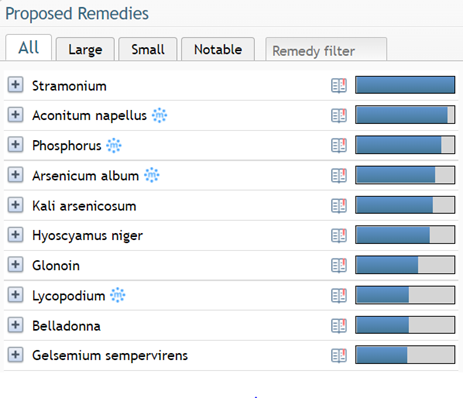
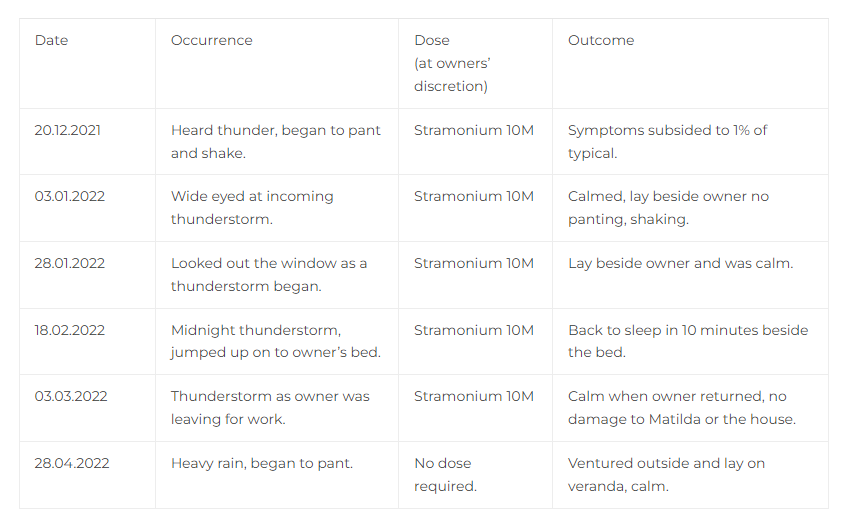

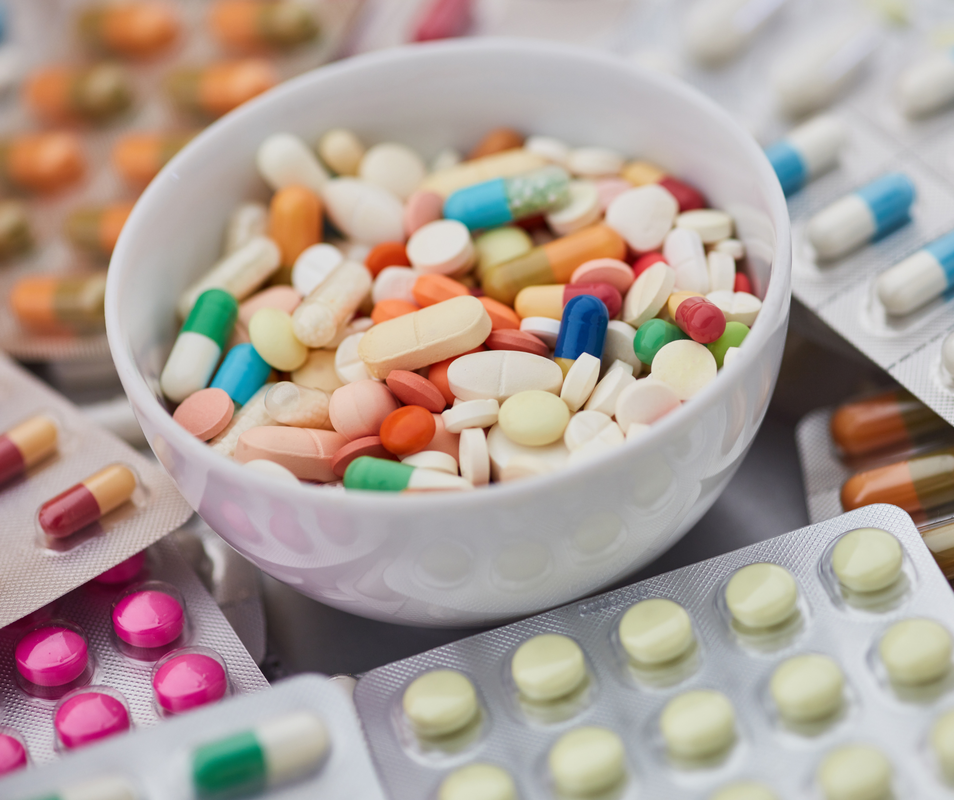
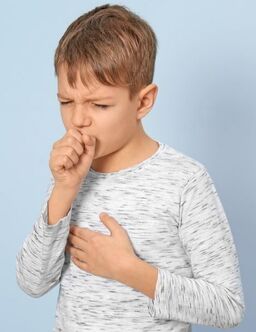

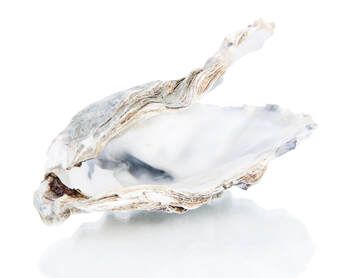

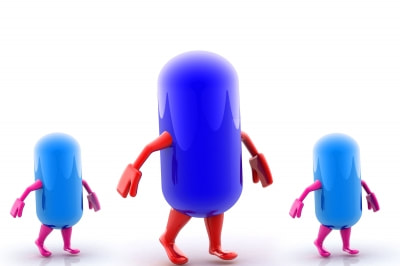

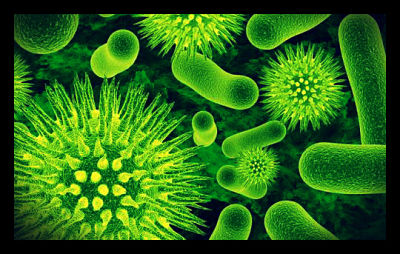
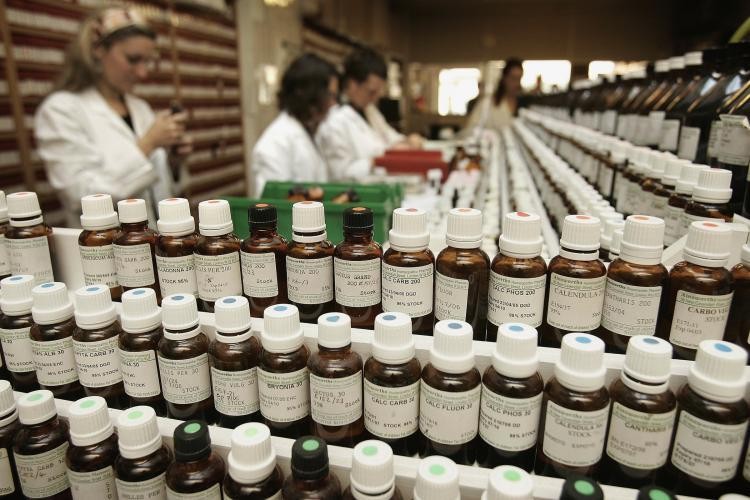
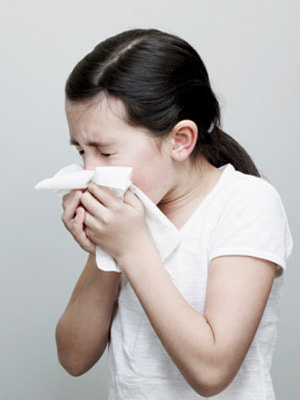

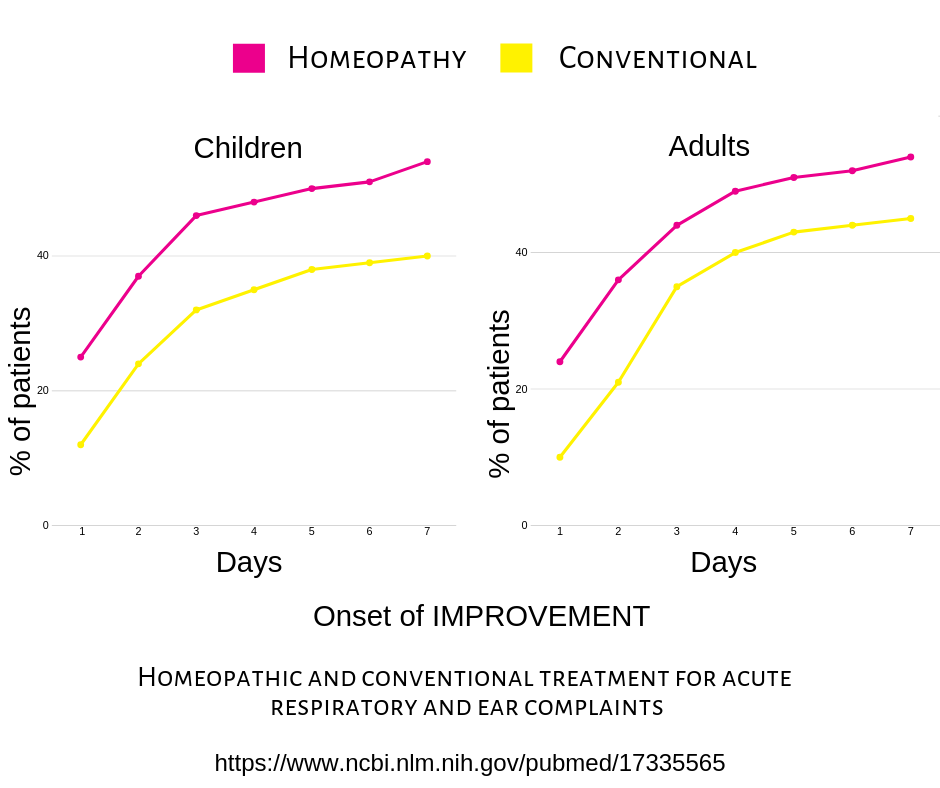



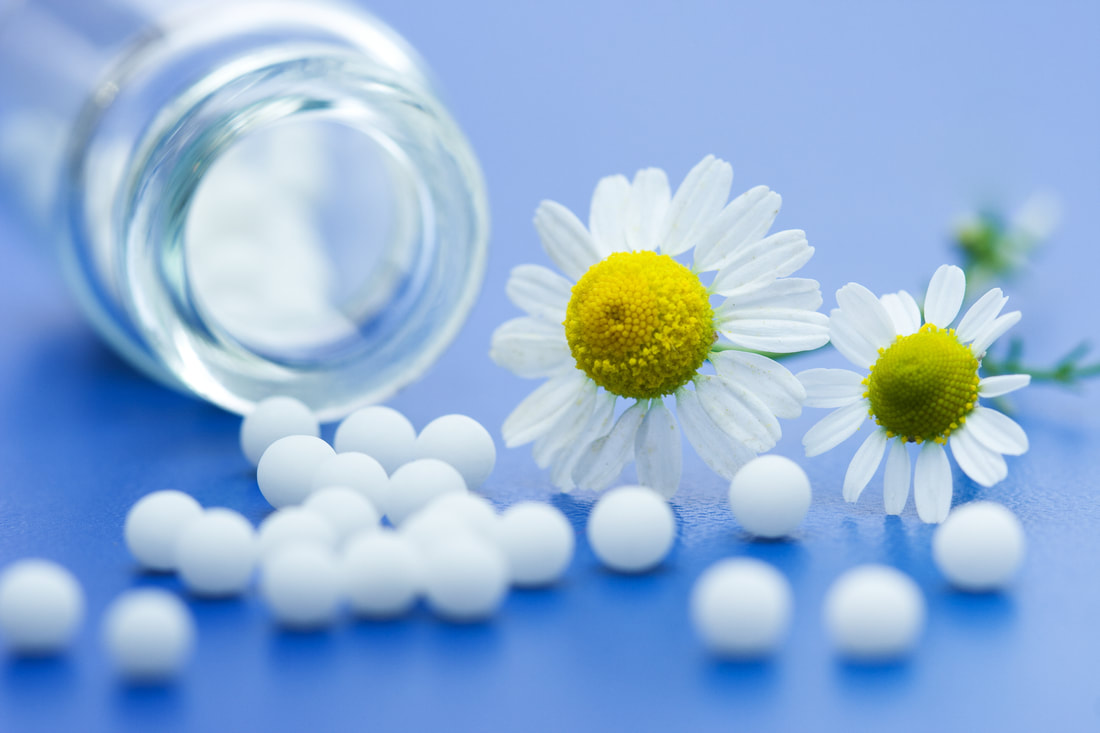

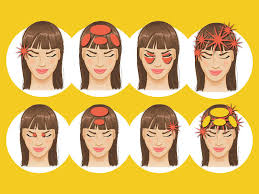




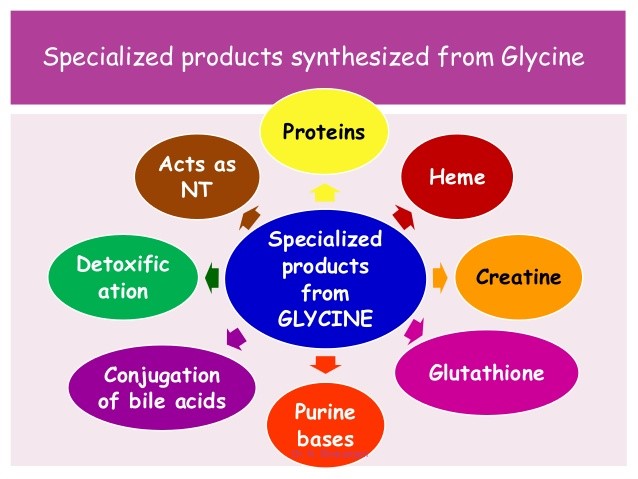


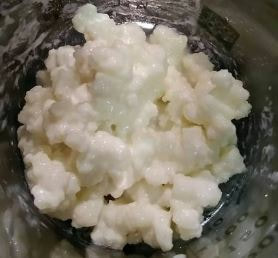
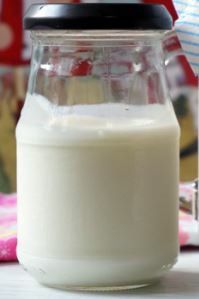
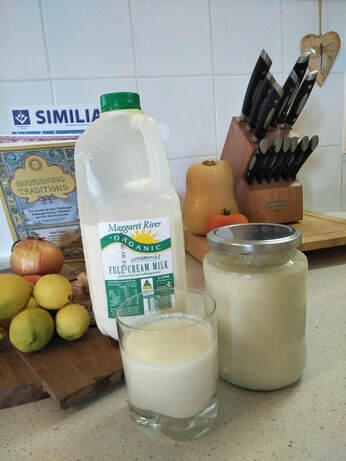
 RSS Feed
RSS Feed



